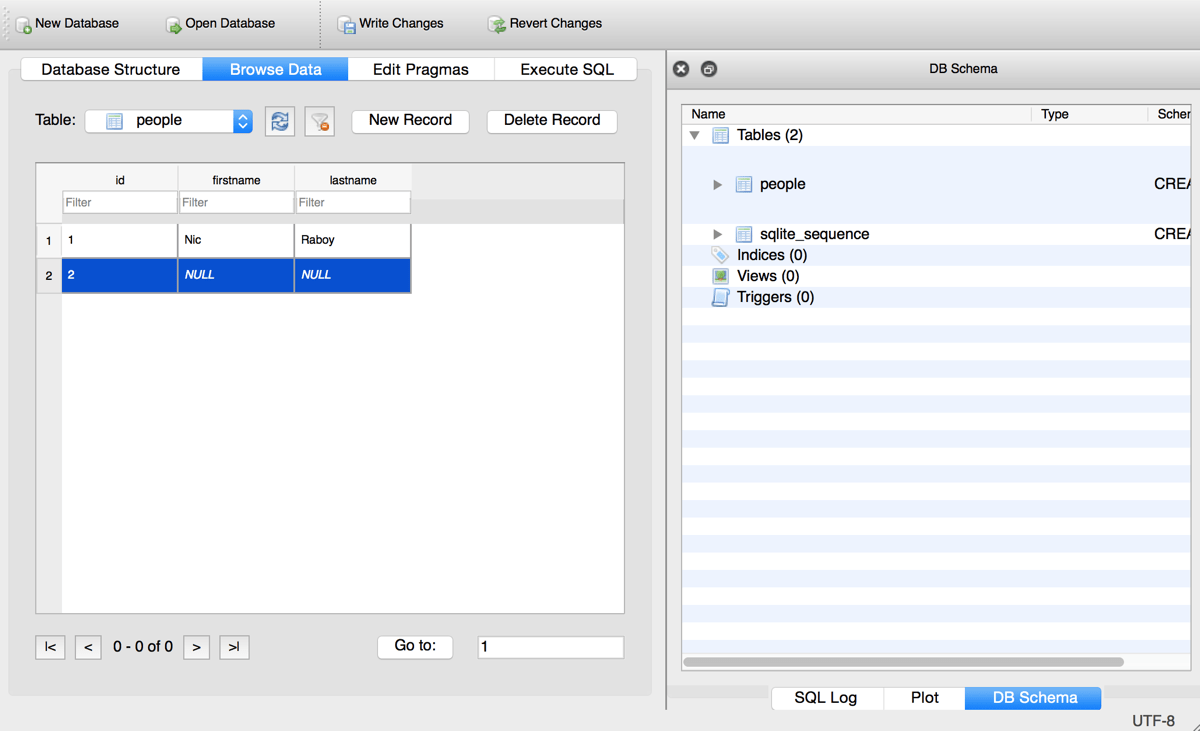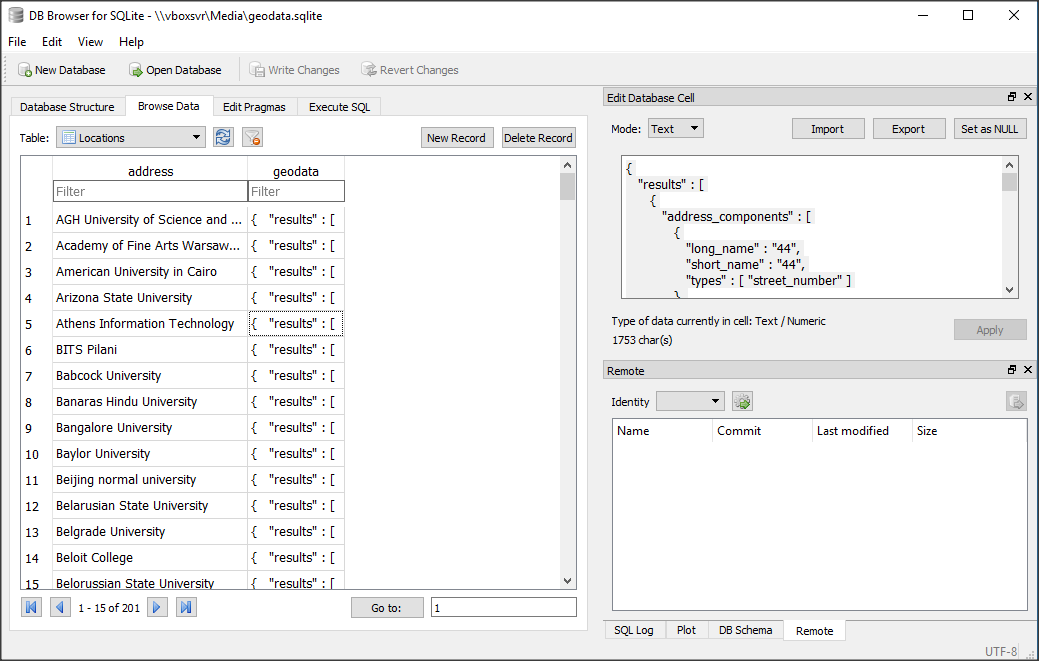

- Db browser for sqlite attach database install#
- Db browser for sqlite attach database update#
- Db browser for sqlite attach database windows#
Launchpad decides to discontinue building for any series). First, we connect to the emp.db database using the sqlite3 command as follows.
Db browser for sqlite attach database update#
Then update the cache using: sudo apt-get update The above SQLite statement is used to attach the database file dbfilename to the current connection with the name aliasname. To add this ppa just type in these commands in terminal: sudo add-apt-repository -y ppa:linuxgndu/sqlitebrowser are looking for is something better than DB Browser For SQLite such as MSSMS.

Db browser for sqlite attach database install#
Install the package using: sudo apt-get install sqlitebrowserįor Ubuntu and derivaties, a PPA with the latest release here: However, if youre here because you simply want to open an SQLite db with. Update the cache using: sudo apt-get update Therefore, every SQLite database connection has the main database and also temp database in case you deal with temporary database objects.

Therefore packages will typically contain some older version, compared to the latest release. Note that Debian focuses more on stability rather than newest features. OpenSUSE sudo zypper install sqlitebrowser Install for Fedora (i386 and x86_64) by issuing the following command: sudo dnf install sqlitebrowser I think it’s a worthwhile investment to purchase. Unfortunately the corrupt one won’t open but at least I know it’s nothing to do with the password. Install with the following command: sudo pacman -S sqlitebrowser SQLiteManager by SQLabs can open encrypted SQLite databases /quote Thanks, that’s a much better program and it does open encrypted Xojo SQLite databases. Other distribution specific instructions: Arch LinuxĪrch Linux provides an up to date version Snap Nightly builds snap install sqlitebrowser -devmode Snap Release build snap install sqlitebrowser Remember to change it’s permission bits to be executable before you run it. Our latest release is available as an AppImage, Snap packages, and distribution specific packages: AppImage
Db browser for sqlite attach database windows#
If you prefer using Homebrew for macOS, our latest release can be installed via Homebrew Cask: brew install -cask db-browser-for-sqliteĭownload nightly builds for Windows and macOS here: SQLite has a concatenation operator () that you can use to concatenate two strings.Example. However, that doesn’t mean you can’t concatenate two strings in SQLite. Nightly builds often fix bugs reported after the last release. SQLite doesn’t have a concat() function like many other database management systems, such as SQL Server’s concat() and MySQL’s concat(). gives an error), try a nightly build ( below). Note - If for any reason the standard Windows release does not work


 0 kommentar(er)
0 kommentar(er)
